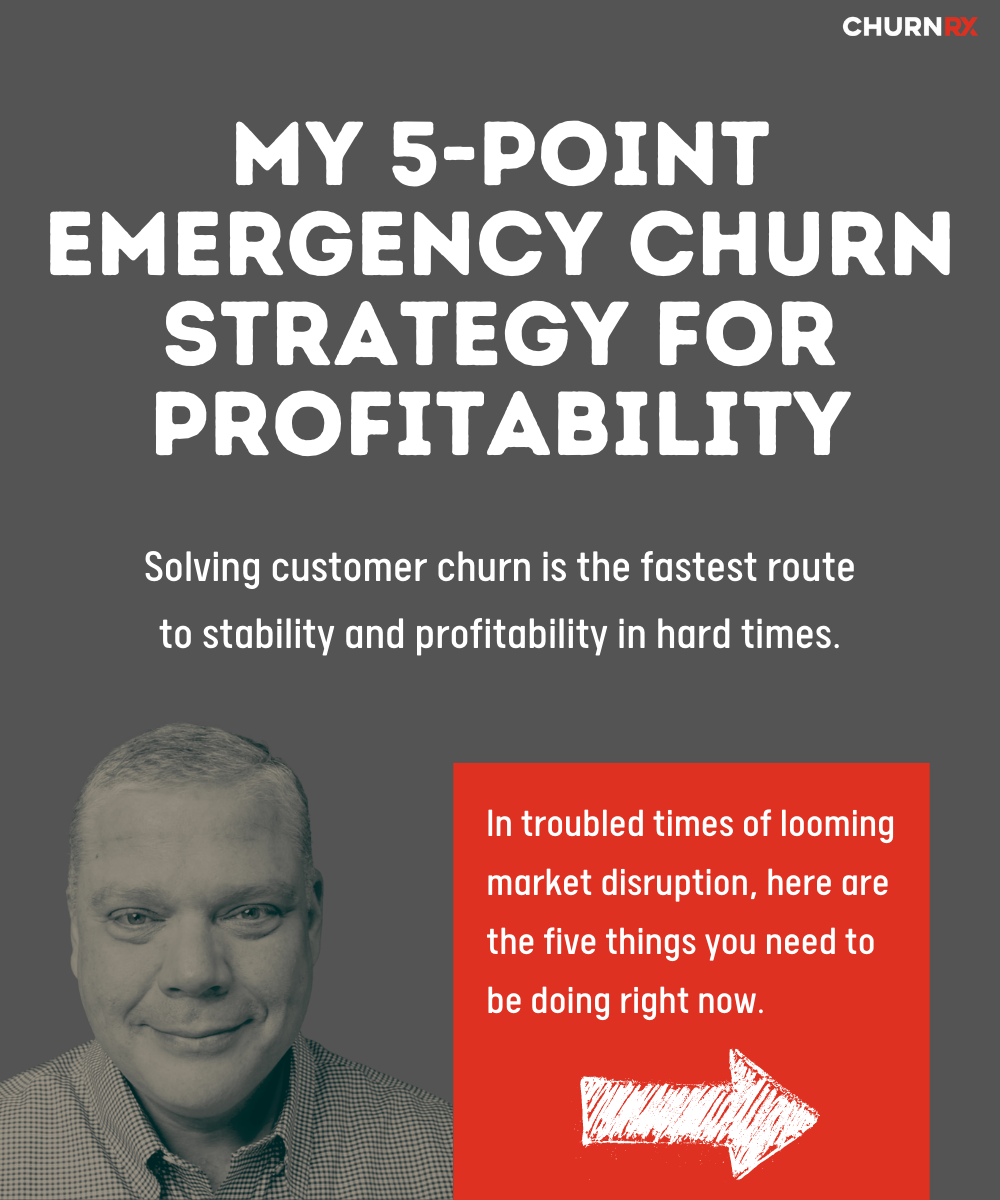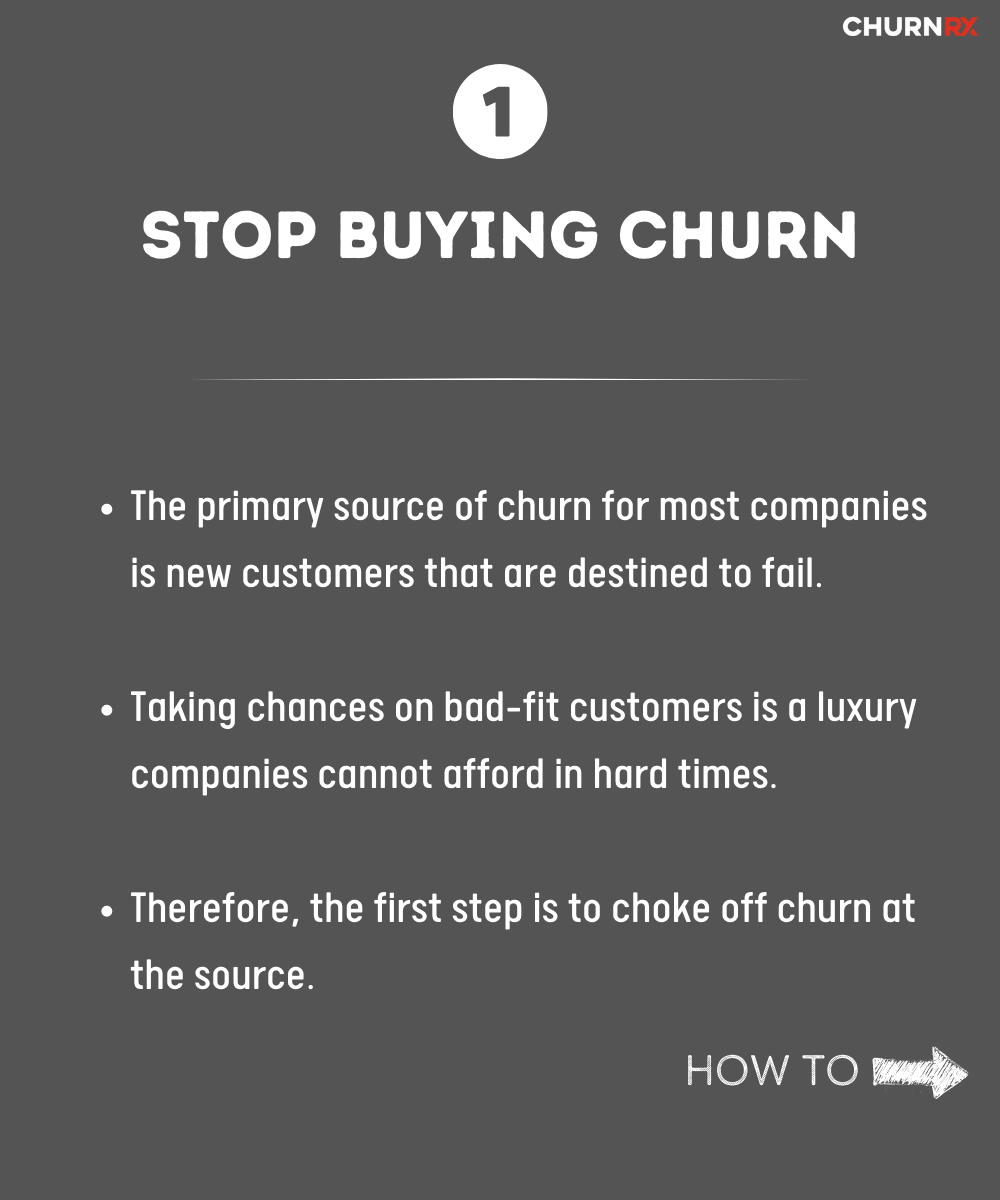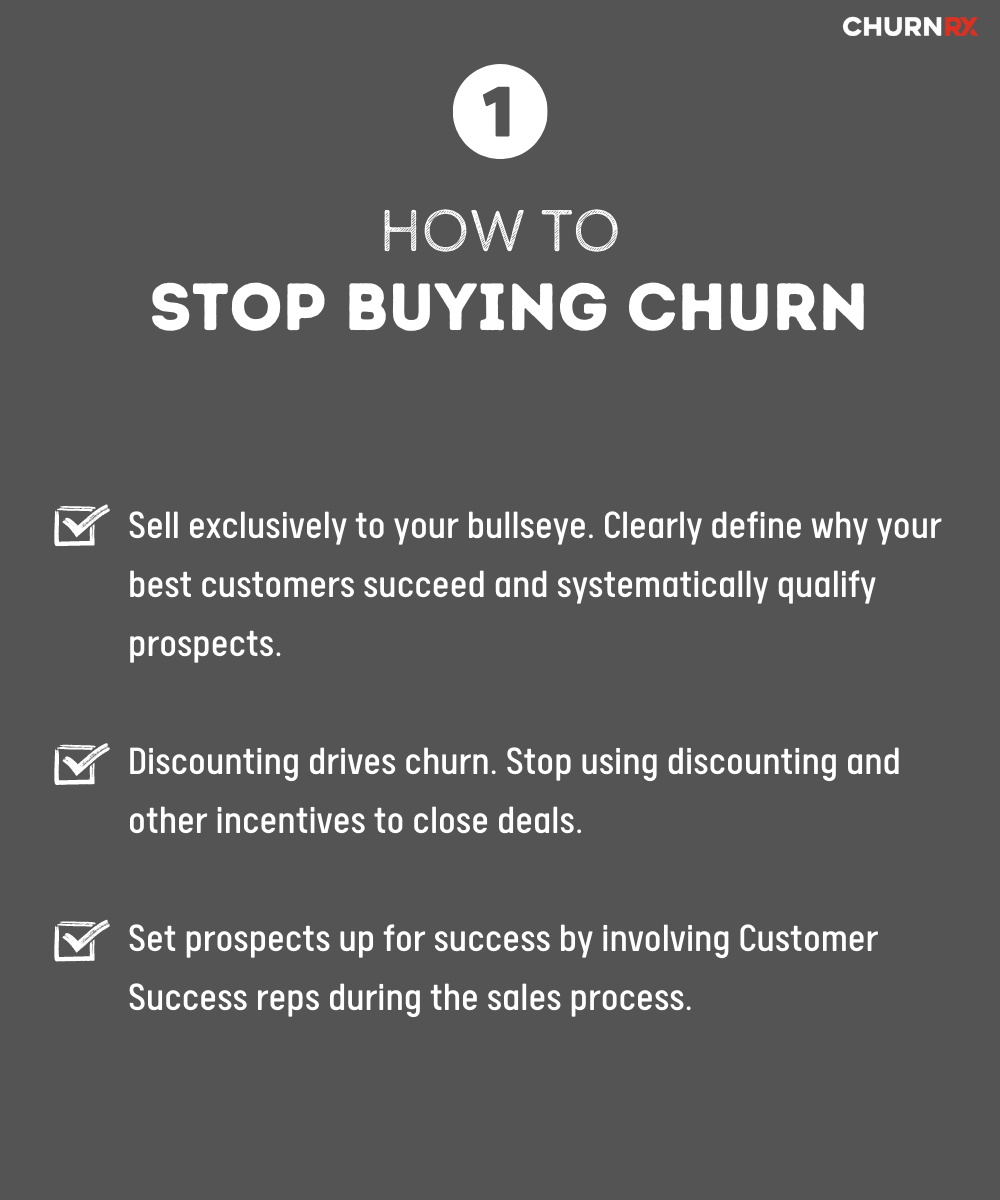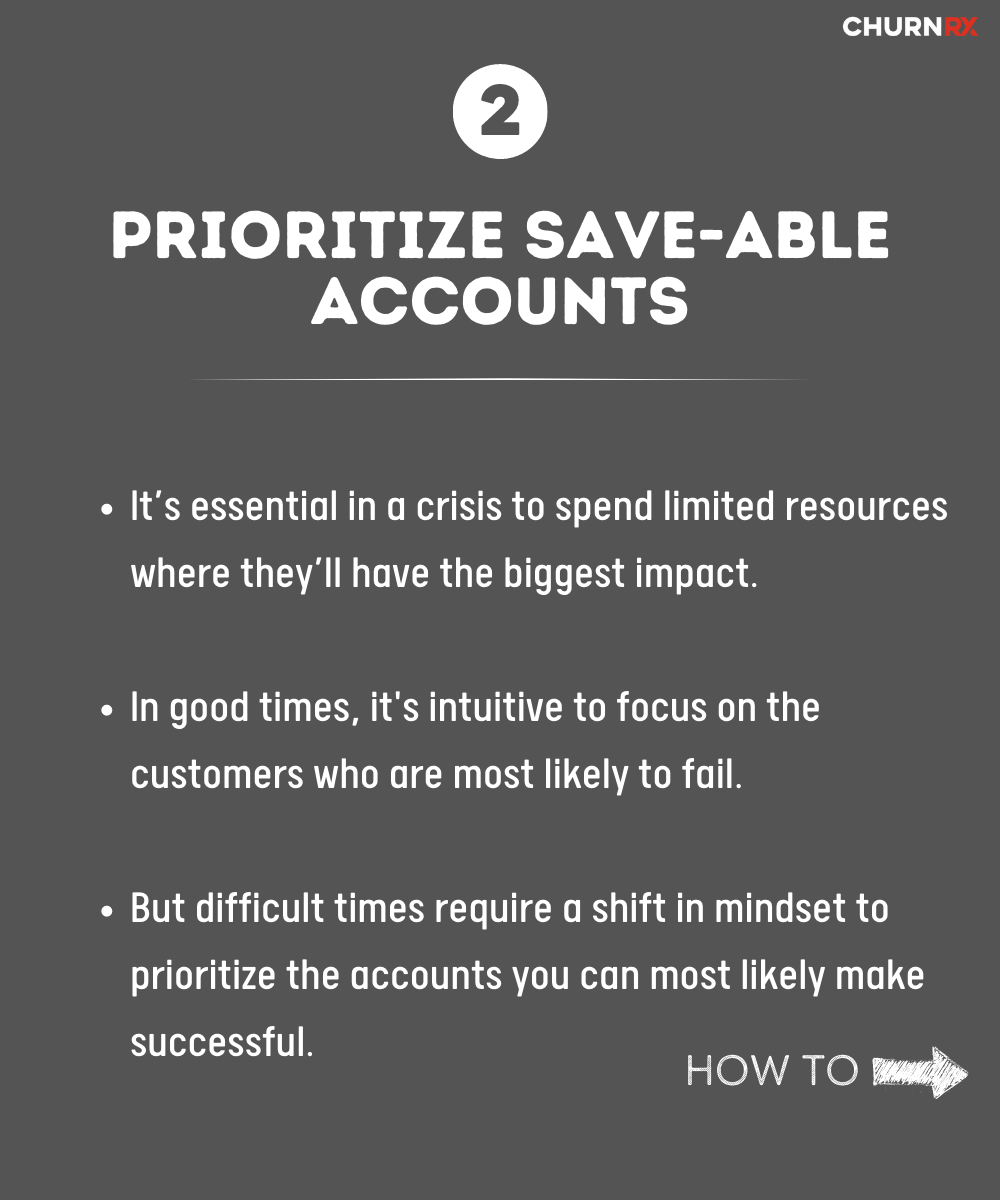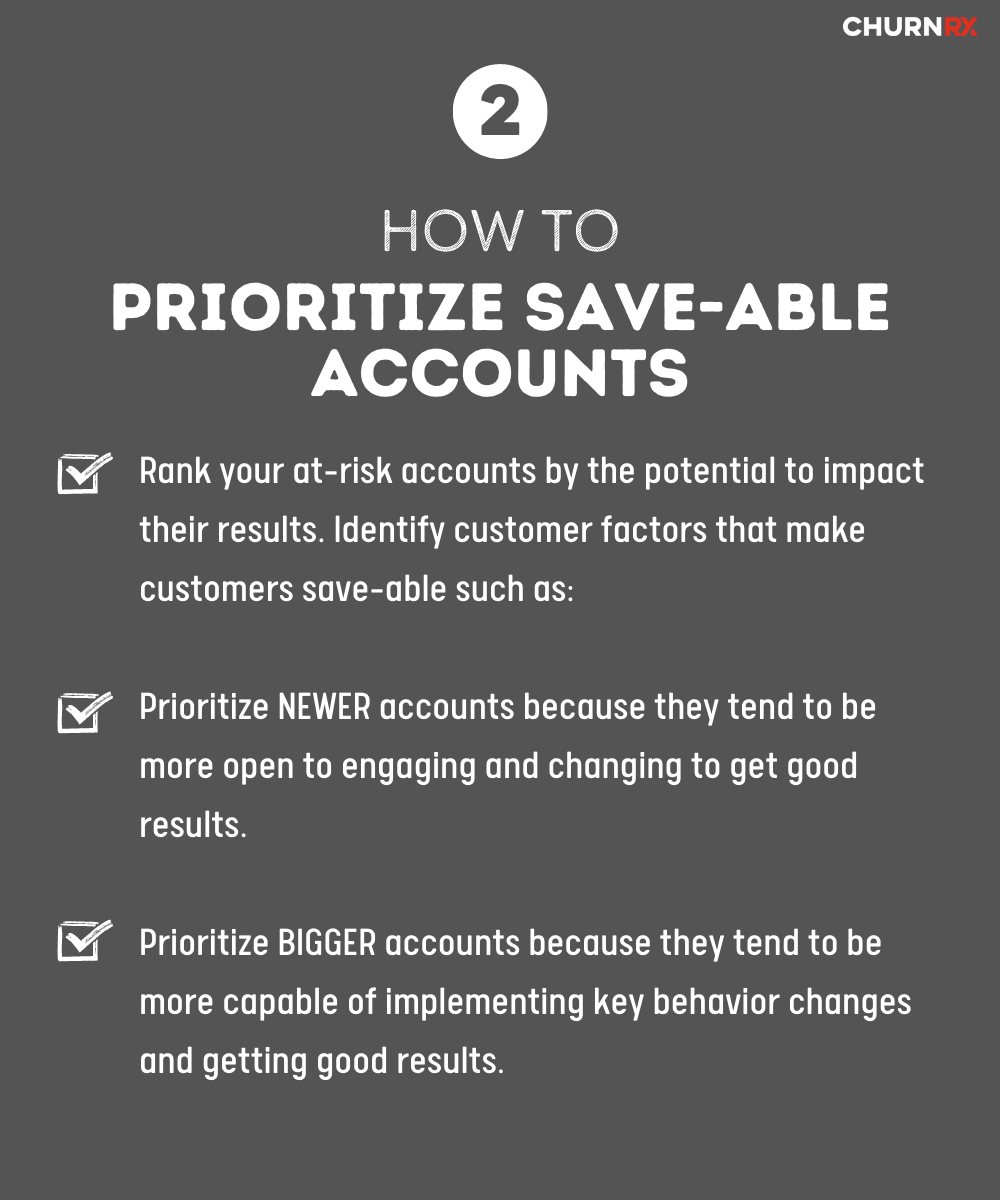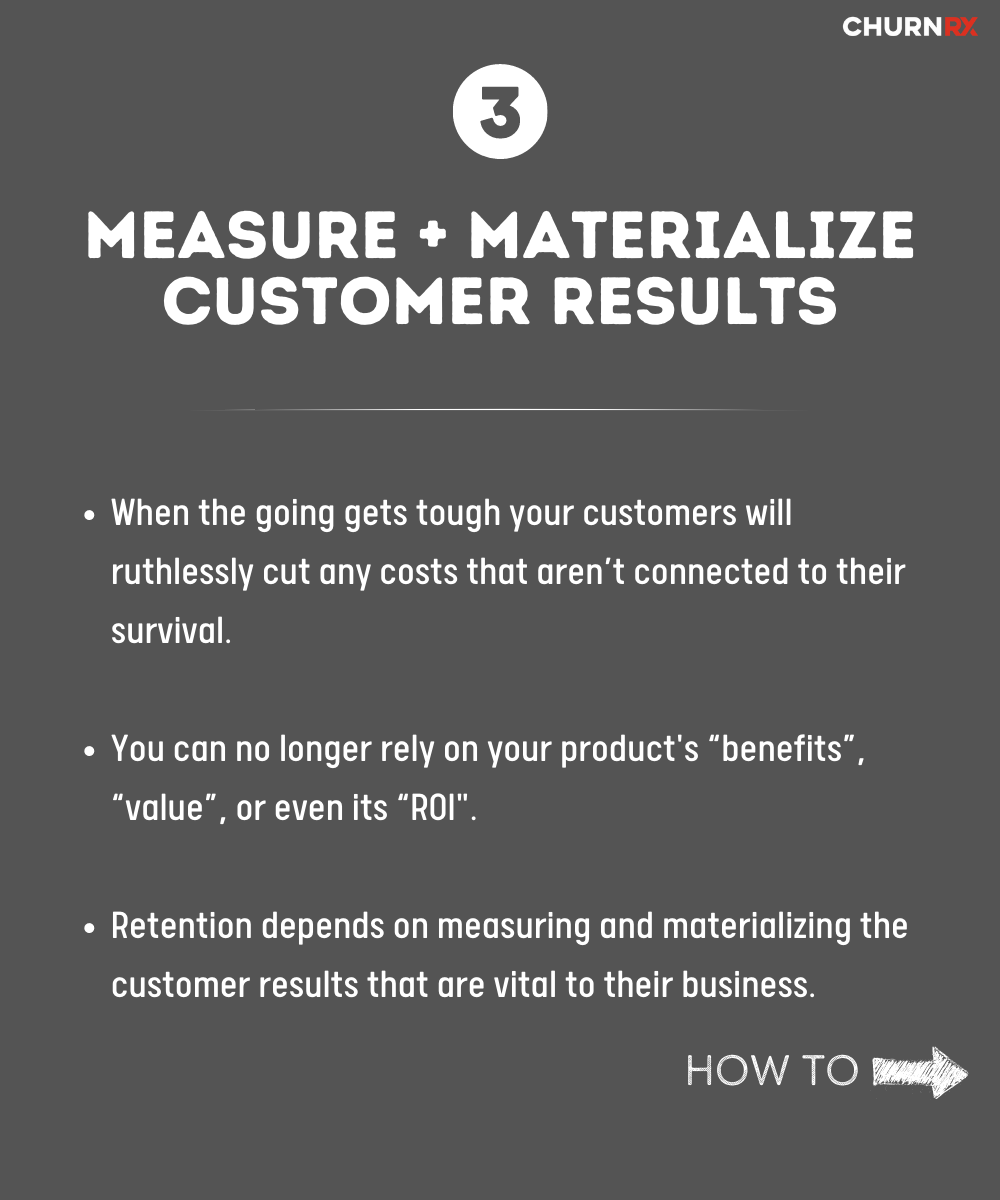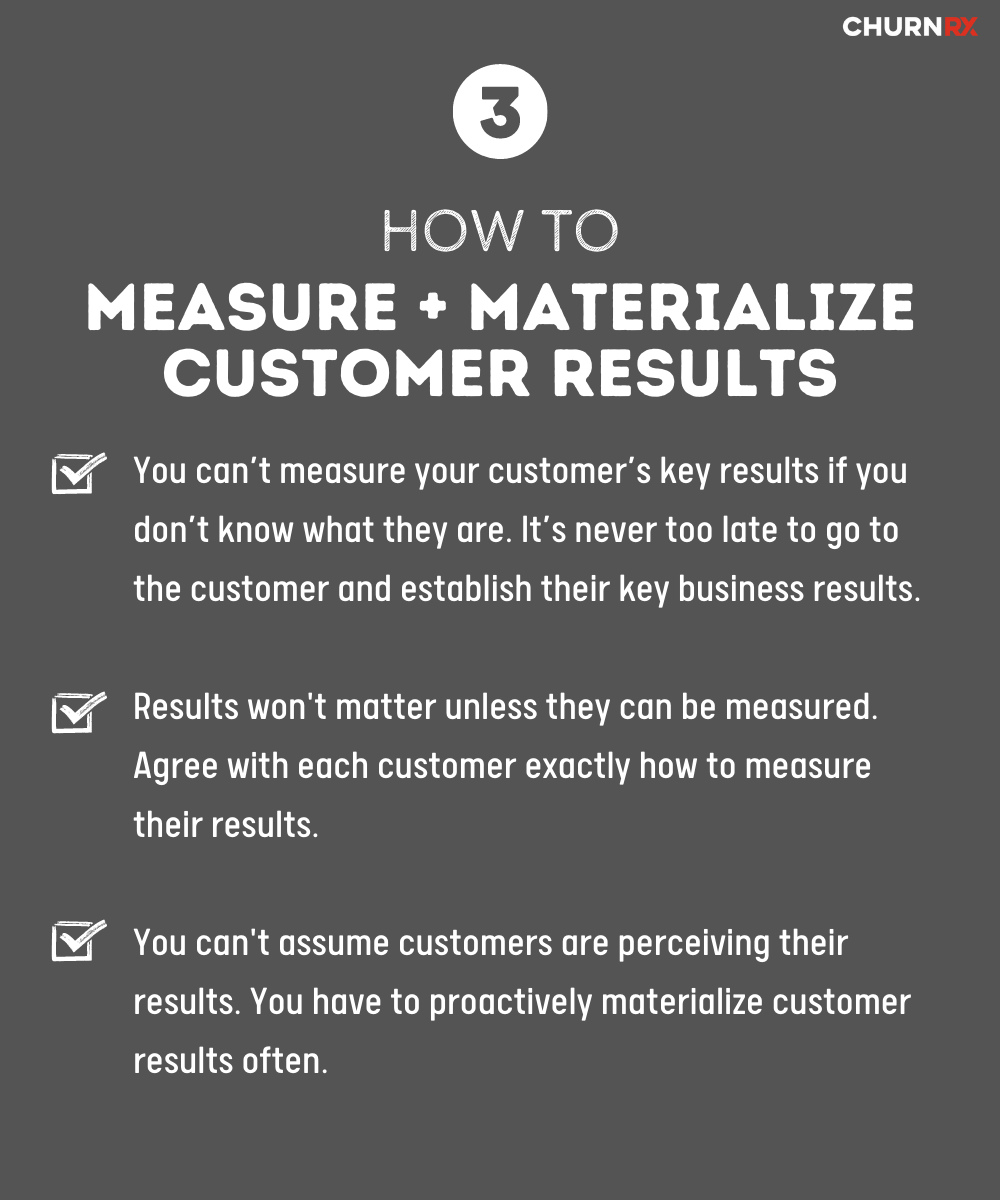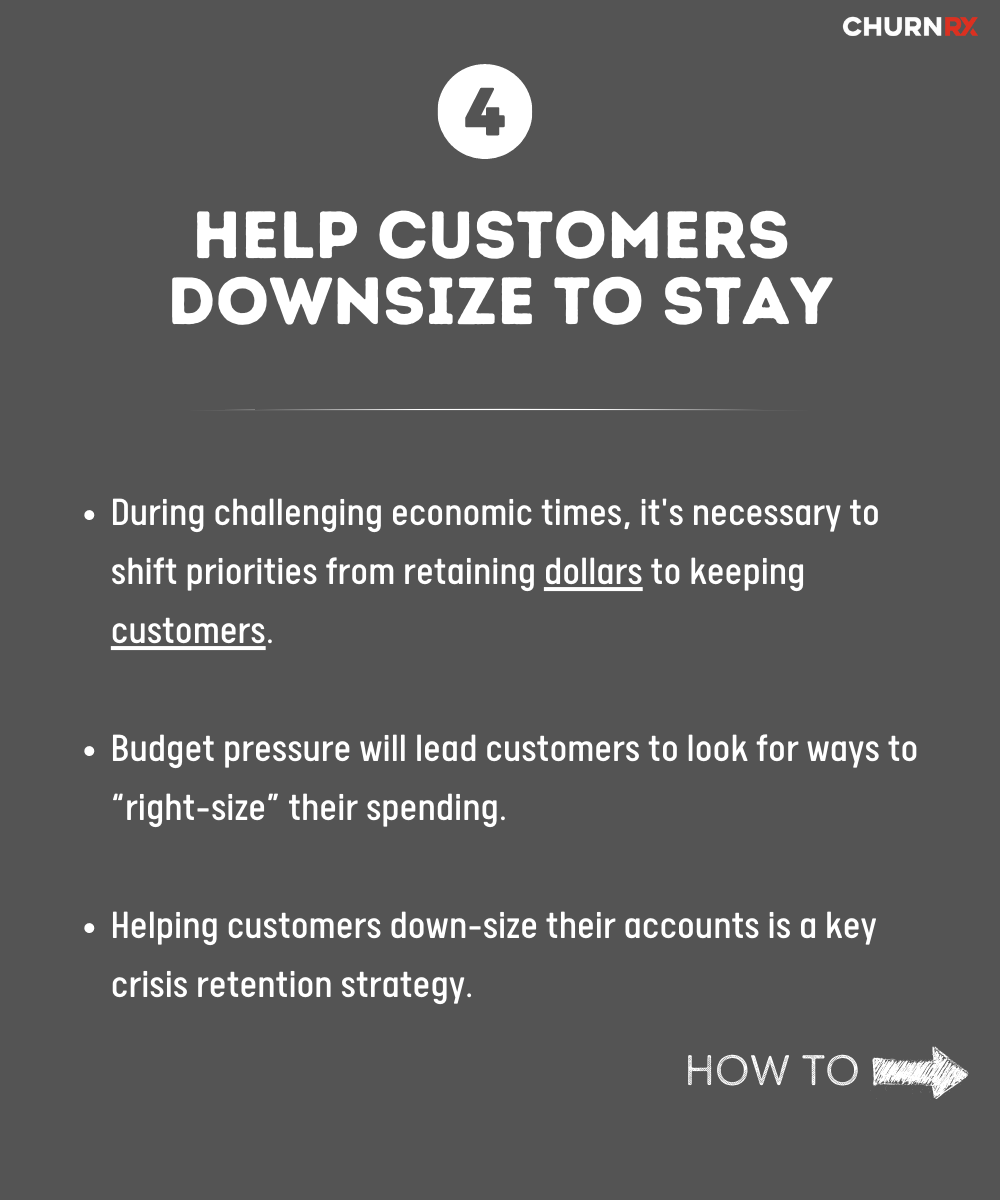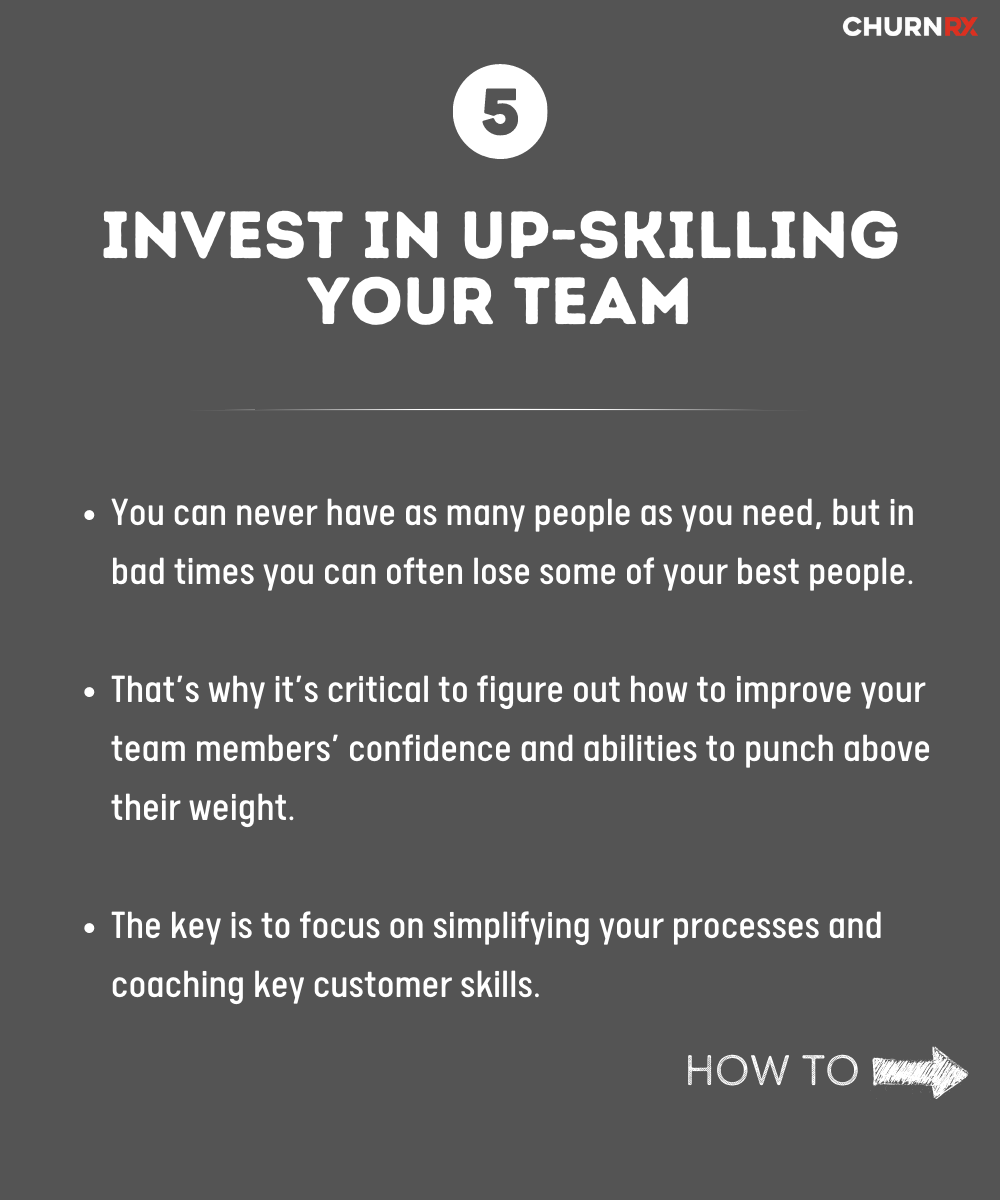My 5-Point Emergency Churn Strategy
- Greg Daines
- Mar 24, 2023
- 6 min read
Updated: Sep 1, 2023
This week:
MY 5-POINT EMERGENCY CHURN STRATEGY FOR PROFITABILITY
Solving customer churn is the fastest route to stability and profitability in hard times.
With the failure of Silicon Valley Bank and looming market disruption, here are the five things you need to be doing right now...
① STOP BUYING CHURN
▪︎ The primary source of churn for most
companies is new customers that are destined to fail.
▪︎ Taking chances on bad-fit customers is a luxury companies cannot afford in hard times.
▪︎ Therefore, the first step is to choke off churn at the source.
② PRIORITIZE SAVE-ABLE ACCOUNTS
▪︎ It’s essential in a crisis to spend limited resources where they’ll have the biggest impact.
▪︎ In good times, you can focus on the customers who are most likely to fail.
▪︎ But difficult times require a shift in mindset to prioritize the accounts you can most likely make successful.
③ MEASURE + MATERIALIZE CUSTOMER RESULTS
▪︎ When the going gets tough, your customers will ruthlessly cut any costs that aren’t connected to their survival.
▪︎ You can no longer rely on your product's “benefits”, “value”, or even its “ROI".
▪︎ Retention depends on measuring and materializing the customer results that are vital to their business.
④ HELP CUSTOMERS DOWNSIZE TO STAY
▪︎ During challenging economic times, it's necessary to shift priorities from retaining DOLLARS to keeping CUSTOMERS.
▪︎ Budget pressure will lead customers to look for ways to “right-size” their spending.
▪︎ Helping customers down-size their accounts is a key crisis retention strategy.
⑤ INVEST IN UP-SKILLING YOUR TEAM
▪︎ You can never have as many people as you need, but in bad times you can often lose some of your best people.
▪︎ That’s why it’s critical to figure out how to improve your team members’ confidence and abilities to punch above their weight.
▪︎ The key is to focus on simplifying your processes and coaching key customer skills.
THERE CAN NEVER BE TOO MANY TICKETS!
WHAT DOES THE DATA SAY? 📊 ⤵
"A few support tickets are a sign of customer engagement, but too many tickets are a red flag for customer churn."
Not only is this wrong, it turns out it's just the opposite →
👉 THE MORE SUPPORT TICKETS CUSTOMERS SUBMIT, THE LONGER THEY STAY! 👈
Our previously published research on customer retention (you can get the full report by following the link in the comments ↓) reveals a consistent relationship between customer tickets and average customer lifespan.
But the fascinating finding here is that there is no threshold number of tickets beyond which the relationship reverses.
In other words: customers can't submit too many tickets.
📊 Our research reveals that the customers who submit the most tickets stay many times longer than those who submit none or only a few tickets!

WHY? Like so many other findings, this may seem counterintuitive. Doesn't a large number of tickets indicate that a customer is failing?
Remember that...
► Support tickets are a signal that customers are engaging with the solution and trying to make it work.
✅ PRINCIPLE: Customers who are engaging and trying are more likely to run into issues AND ALSO more likely to achieve results!
💭 Now, simply follow that principle through to its logical conclusion...
⦿ Customers who are trying are more likely to run into issues.
→ When their issues are solved, they get results.
→ When they get results, they want more.
→ So they try to do even more things.
→ This leads them to run into even more issues.
→ (and so on...)
What about high-severity issues? Our research didn't address this factor directly, though it's obvious these can lead to customer frustration and even the potential for churn.
But in my experience, if an issue severely impacts a customer's business, it means that the solution is extremely important to that customer. These are the customers most likely to stay.
I have found that when we do our best to address high-severity issues, customers tend to appreciate the effort, and most will not churn.
How do I define a "Customer Result"?
In my latest Churn Strategies Live Stream (3/23/23) I answer the question: What is the right way to define a customer result?
WHY DON'T SOME CUSTOMERS KNOW THEIR KEY RESULTS?
Customer results are everything, but...
You can't drive your customer's results if you don't know what they are.
It can be surprisingly difficult to get some customers to identify which results ultimately matter to their decision to renew and expand.
Some customers already know their key business objectives, but many more are not that prepared.
I've found that three things frequently happen when I ask customers for their key business objectives:
① They don't know what they are.
② They don't care what they are.
③ They won't tell you what they are.
Knowing how to knock down these obstacles is key to establishing the customer's results and setting them up for success.
In this post, I'm going to address the first (and most common) of these obstacles.
① WHAT TO DO IF THEY DON'T KNOW WHAT THEIR KEY RESULTS ARE?
The most important reason they can't articulate their results is that they haven't translated WHAT they are doing into → WHY they are doing it.
They often assume the business benefits are obvious and think this step is unnecessary.
But we know that making the results explicit is critical to measuring and materializing (M+M) them for success.
THE SOLUTION:
The key to shifting the customer from a "WHAT" mindset to a "WHY" mindset is something called:
►► THE 5 WHY'S
The great Sakichi Toyoda realized that you can't ask "why" more than 5 times without getting to the root cause of any problem. And the same applies to identifying the fundamental purpose.
And since most people don't think in terms of root causes or purposes on a daily basis, we need to be able to ask "WHY" in up to five different ways to help them reason it out.
For example, when you ask a customer what is their purpose in adopting your solution, they will commonly respond that their purpose is to "enable new tools", or "do new activities."
They are thinking in terms of WHAT they are doing rather than WHY they are doing it.
So we ask WHY Questions:
💭 "Why is this important to the business?"
💭 "How will it impact the business?"
💭 "What is driving the need for this now?"
💭 "How will you know if it works?"
💭 "How will you measure success?"
If you are speaking to the right person, your customer will engage with these WHY questions.
My experience is that the vast majority of customers genuinely appreciate the exercise and value the clarity it produces.
[This simple skill is one of the 8 Core Power Skills we teach in our customer success team training. Reach out to me if you'd like to learn more.]

HOW TO CHOOSE WHICH CUSTOMERS TO 'SAVE'
It feels like you never have enough people, but in hard times you may quickly find yourself operating with far fewer resources than you need to execute your customer success process.
There are two key strategies...
The first strategy I'll discuss in a separate post: dramatically reduce what you do for your customers to only the things that directly impact results.
In this post, I'm going to talk about the other strategy: reducing the number of customers you are actively engaging to concentrate your resources.
Even when you've pared back your customer success playbook, you'll likely still need to target a subset of customers for active engagement.
Doing this well requires a key shift in mindset...
In good times, we work to identify which customers are at risk of failing and prioritize them for help. But in hard times, we have to flip this idea:
Instead of focusing on the customers who are most likely to fail, the key is to target the customers who, with your intervention, are most likely to succeed.
This ensures that your limited resources have the absolute highest impact on your results.
HOW TO PRIORITIZE CUSTOMERS FOR SUCCESS:
1. AT RISK CUSTOMERS:
The first step is to identify the customers at risk of failing. In order to get a manageable list, we need to be able to eliminate customers we have a genuine reason to believe are stable. Be careful not to assume "happy" customers are stable! Identify the lightest-weight processes that will be sufficient to maintain these customers.
2. KEY SUCCESS FACTORS:
The next step is to identify the factors that improve the likelihood of your interventions driving results for at-risk customers. This is where your knowledge of your customers and their business is critical. Some key questions to ask:
► Why do some customers respond better to our help?
► What factors make a customer more likely to change their behavior?
It's best to choose just a couple of key factors rather than build a complex model. The reality is that everything is a rough guess, but don't underestimate the value of that judgment. In order for this to work, a simple framework works best.
I've found that in many cases, the two best factors to use are:
The 'newness' of the customer: how long have they been a customer?
The size of the customer: how big is their business or organization?

3. PRIORITIZATION FRAMEWORK:
Once you have your key factors, the idea is simply to tag the at-risk accounts according to those factors. Now you can see one big reason why simpler is better: tagging accounts can be time-consuming.
Finally, you simply organize them into groups by the key factors to form a basic prioritization framework. I've included a simple doodle to illustrate the idea below.
WHY IT WORKS
Understand that this method works primarily because it focuses your resources, and that cannot be done without prioritization. The power is not in the precision but in the concentration of effort.
Quote of the Week...


